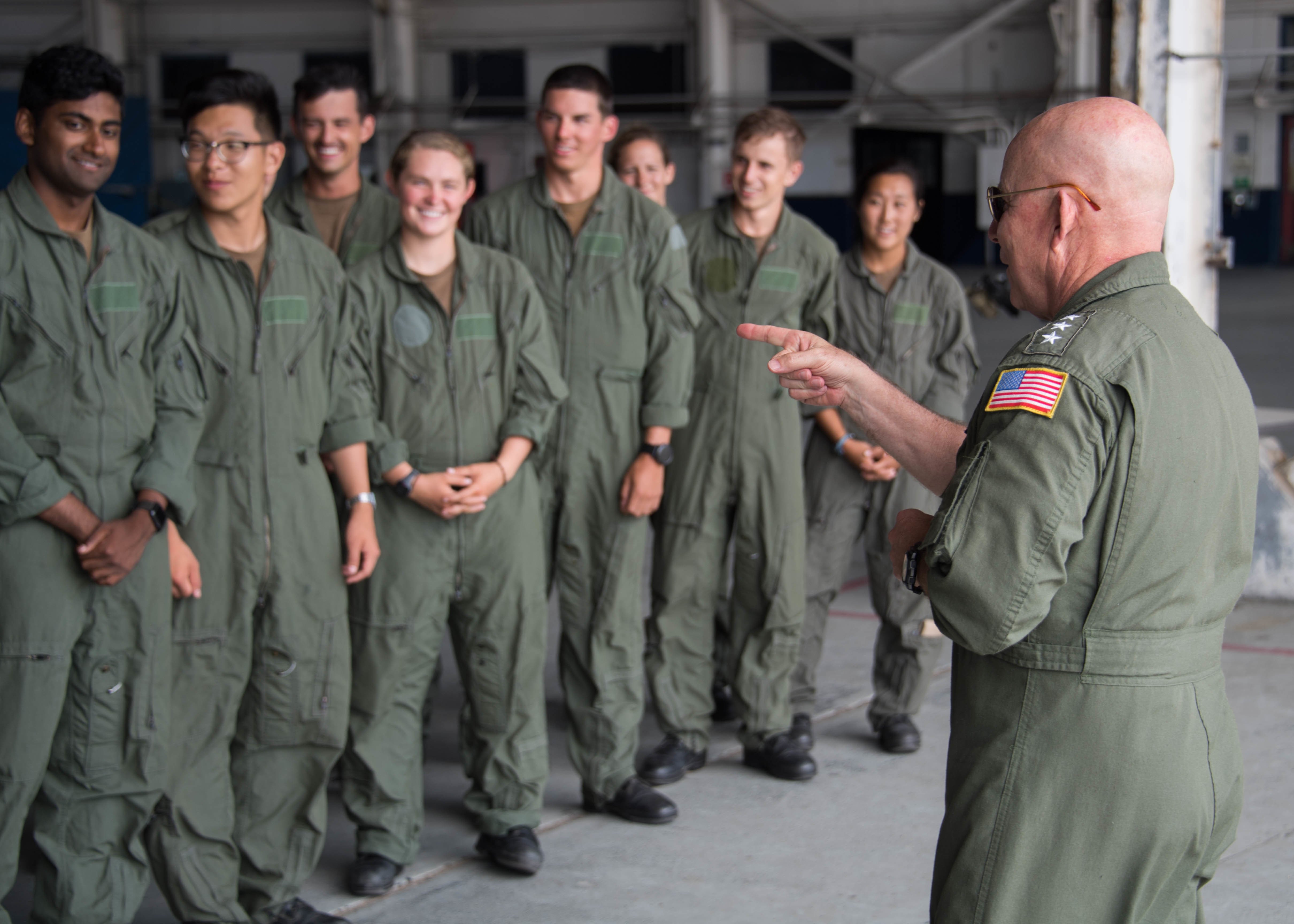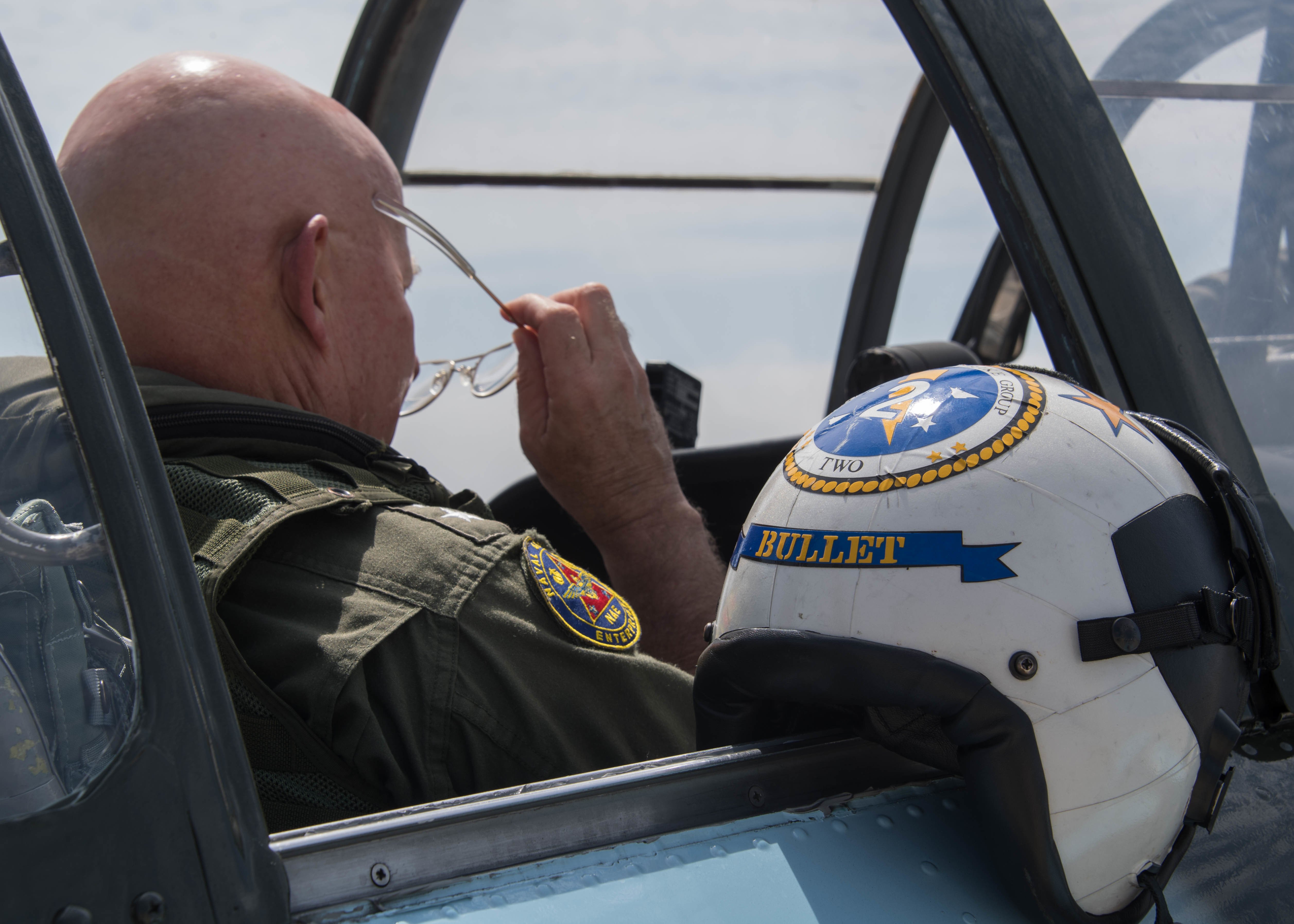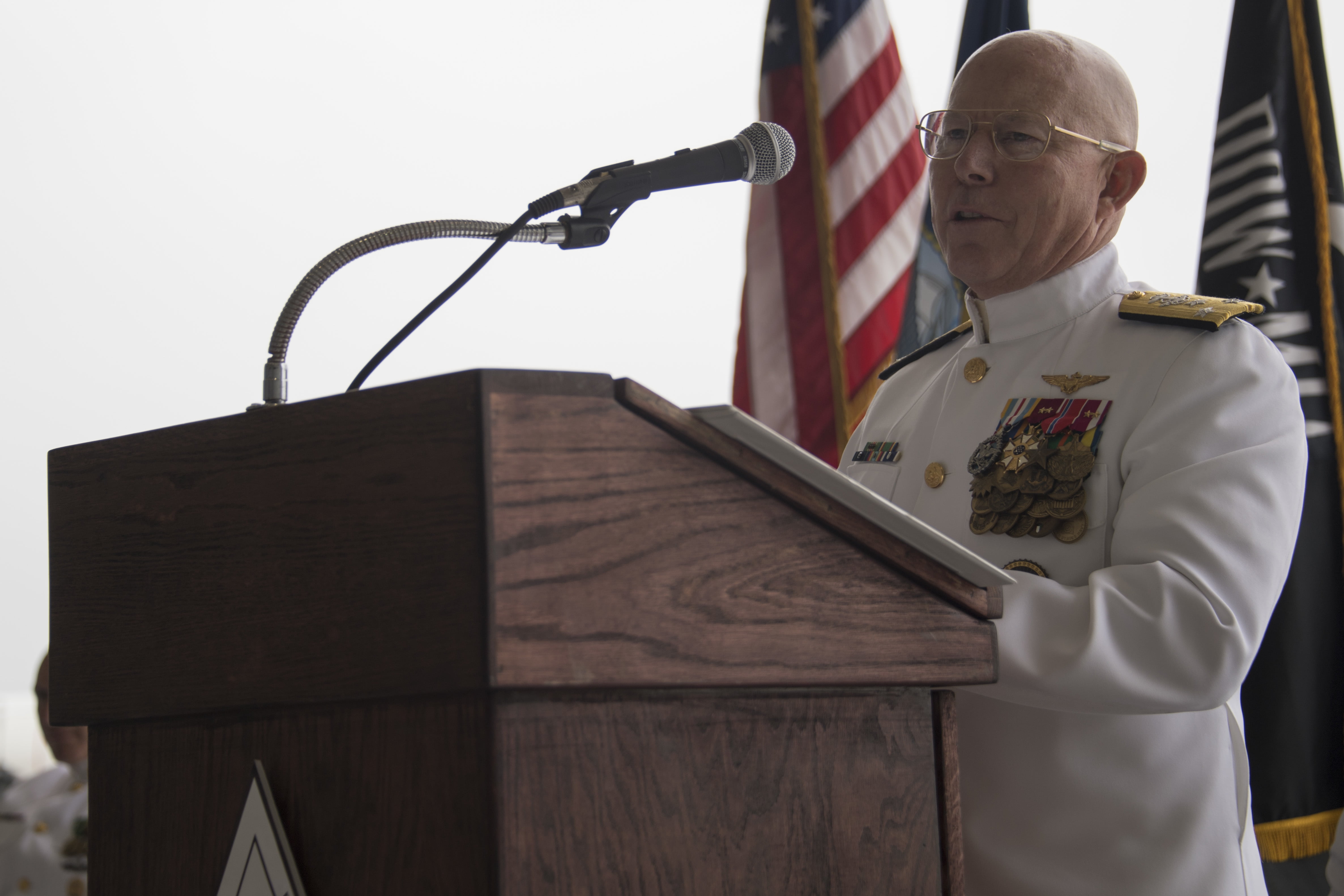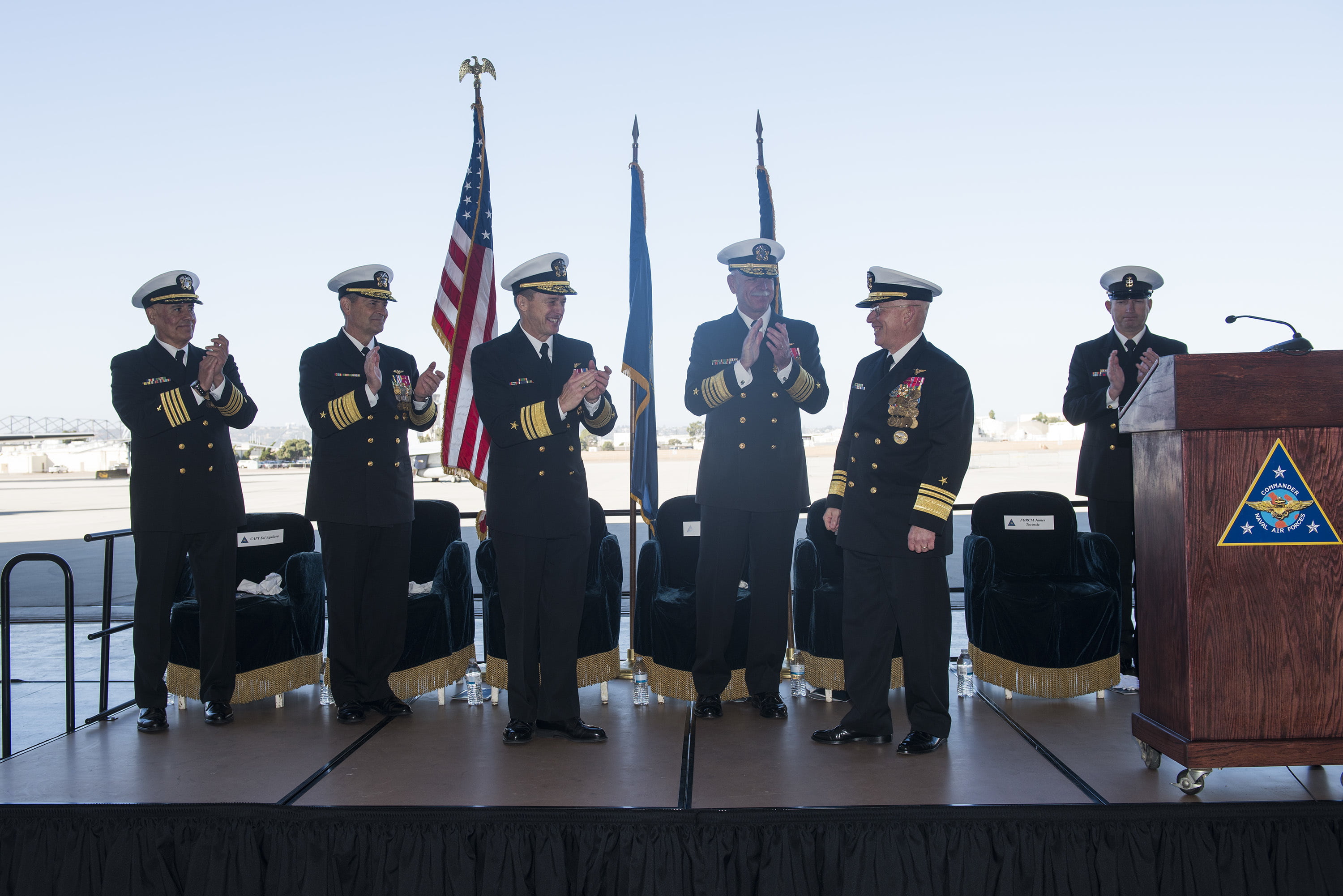By Robbin Laird
As Admiral Nimitz confronted the last century’s challenges in the Pacific, he concluded a core lesson for this century’s Pacific warriors:
“Having confronted the Imperial Japanese Navy’s skill, energy, persistence, and courage, Nimitz identified the key to victory: ‘training, TRAINING and M-O-R-E T-R-A-I-N-I-N-G.’ as quoted in Neptunes’s Inferno, The U.S. Navy at Guadalcanal (James D. Hornfischer)”
The US and its core allies are shaping new capabilities to deal with the various threats and challenges in the Pacific in the time of the Asian century.
Flexibility in operations and agility in inserting force with a proper calibration of effect will be enhanced as new systems come on line in the years ahead. But these systems will have the proper effect only in the hands of skilled warriors.
Recently, I visited Naval Air Station, North Island, in San Diego, to meet with VADM Miller, Commander Naval Air Forces, or the “Air Boss” of the US Navy.
Joining the discussion was the F-35 US Navy Wing Commander, Captain Max McCoy.
We discussed the evolution of the Naval Air Wings in the context of the Navy working what we have called in the past “the kill web,” or what I am now referring to as building an integrated distributed force.
VADM Miller started by underscoring that significant change is underway for the carrier air wing or CAG.
The F-35 is providing a forcing function of change.
One Mean Aircraft from SldInfo.com on Vimeo.
According to VADM Miller:
“5th generation capability is a catalyst for change: how we fight, how we train, how we maintain and sustain aircraft, how we flight test, and how man our squadrons (pilots & maintenance personnel).
“The emphasis is interoperability, networking, distributed forces, and integration.”
But several new capabilities are being introduced into the operational force, such as the Triton, P-8s, modernized Super Hornets, the new Hawkeye, the MQ-25 unmanned tanker.
These new capabilities are being worked into an evolving Naval strike force to shape new capabilities for the carrier and for the distributed force.
The new Commandant of the USMC has highlighted how he sees the evolution of the USN-USMC team to shape a distributed offensive defensive capability and the changes described by the Commandant along with changes to the carrier force are adding up to a significant trajectory of change for the sea-based force.
I asked him what are his top funding priorities and he underscored the key challenge of sustainment and getting the force fully supported for its demanding global deployment challenges.
But along with sustainment he highlighted the key challenge of shaping a new approach to training and testing in which the force evolves more rapidly in its combat learning skills from the standpoint of force interoperability.
The training function is changing dramatically, and in many ways, the reality underlying the function is changing dramatically as the capabilities and the focus on what I would call shaping an integrated distributed force change as well.
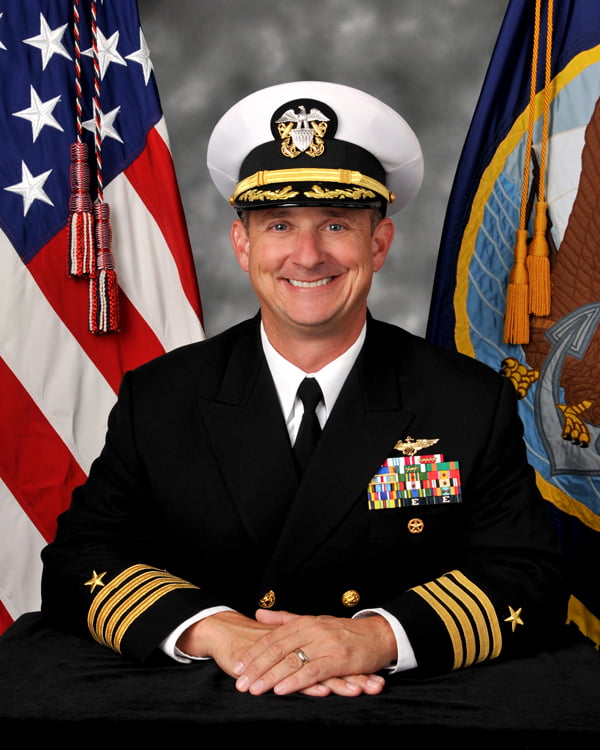
Captain Max McCoy highlighted what one might call the forcing function of the F-35 and of the F-35 aviators upon the training dynamic.
“We are teaching F-35C pilots to be wingmen, but training them to think like mission commanders.
“F-35C provides more situational awareness than ever before and pilots must be able to influence the battlespace both kinetically and non-kinetically.
“The pilot must interpret cockpit information and determine the best means to ensure mission success either through his own actions or by networking to a distributed force.”
They need to think like mission commanders, in which they are operating in terms of both leveraging and contributing to the networked force.
This means that the skill sets being learned are not the classic TTPs for a combat pilot but are focused on learning how to empower and leverage an integrated force.
“Training can no longer focus solely on T/M/S capabilities.
“Training has to develop young aviators who appreciate their role within a larger maneuver/combat element.
“Specifically, how does F-35C complement 4th generation capabilities within the Carrier Air Wing and surface combatants distributed within the Carrier Strike Group?
“It is no longer about fighting as a section or division of fighter aircraft.
“We only win if we fight as an interoperable, networked, and distributed force.
“We are still learning and incorporating 5th generation capability into the Navy.
“Our efforts must be calculated and measured but push beyond historical comfort zones.
“We must embrace what is new and redefine what is basic warfighting capability.
“This starts with the Fleet Replacement Squadron (FRS) and Air Combat Training Continuum (ACTC) syllabi.
“We must make integrated training a key component of a pilot’s progression from FRS graduate to mission commander. F-35C is an enabler, if and only if, we train our pilots to think well beyond the limits of their cockpit and reach of an individual aircraft’s weapons system”.
They are learning how to operate as distributed force packages.
This is leading to radical disjunctures from traditional training approaches and thinking.
How do you best train your aviators to tap into networks and provide for distributed strike?
In shifting from a training focus on traditional TTPs, how do Naval aviator’s problem solve differently?
How to reshape effectively the infrastructure to support new training approaches?
How do Naval aviators integrate with and maximize their impact for and on the combat force?
Live Virtual Constructive Training provides a technological path, but is a necessary but not sufficient tool set for the Navy to get where they need to go.
Training is now about shaping domain knowledge for the operational force to ensure that “we can be as good as we can be all of the time.”
According to Vice Admiral Miller and Captain McCoy:
“The ability to reshape training and change culture requires a warfighting community to break from traditional training methods either on the range, at sea and in the simulated environment.
“There are numerous reasons why we must find a new balance among live, virtual and constructive (LVC) training in a distributed mission training (DMT) construct.
“Range infrastructure, threat simulation, cost to operate, and security are driving us to search for new training opportunities.
“However, the most important reason is operational readiness – warfighting first.
“We must be ready and prepared to fight at all times independent of FRTP/OFRP phase. LVC/DMT is the only way to be good all of the time given a unit’s resourcing that includes manpower, aircraft, and flight hour budget.
“It forces integration among 4th and 5th generation aircraft while also providing the medium to integrate with surface combatants.
“Again, in the future, we are all wingmen in the battlespace who must think well beyond the cockpit or bridge of our platforms. LVC/DMT will be the proving ground that unlocks how we think and encourages TTP development that would otherwise be hindered by fiscal constraints and under-resourced or inadequate ranges.
“It is the bridge that builds cooperation and cohesiveness among communities. LVC/DMT is the common ground that teaches our amazing tacticians how to appreciate a wide range of capabilities that are far more effective in the collective.”
If Admiral Nimitz would visit Naval Air Station, North Island, today, he would be amazed and pleased to see the technology in the hands and coming into the hands of the Naval aviation community.
But he certainly would wish to see the 21stcentury re-set of training underway to be fully supported and funded.
See also the following:
Air Marshal (Retired) Brown on Shaping a Fifth-Gen Kill Web Training Appraoch
Vice Admiral Dewolfe Miller, III
Commander, Naval Air Forces/Commander, Naval Air Force, US Pacific Fleet
Vice Adm. DeWolfe Miller is a native of Annapolis, Maryland, grew up in York, Pennsylvania, and graduated from the U.S. Naval Academy in 1981. He holds a Master of Science from the National Defense University, is a Syracuse University national security management fellow and is a graduate of the Navy’s Nuclear Power Program.
His operational assignments include Training Squadron (VT) 19 in Meridian, Mississippi; Attack Squadron (VA) 56 aboard USS Midway (CV 41); Strike Fighter Squadron (VFA) 25 on USS Constellation (CV 64); VFA-131 and VFA-34 both aboard USS Dwight D. Eisenhower (CVN 69); executive officer of USS Carl Vinson (CVN 70); commanding officer of USS Nashville (LPD 13); commanding officer of USS George H.W. Bush (CVN 77) and as a flag officer, commander of Carrier Strike Group (CSG) 2 participating in combat Operations Enduring Freedom and Iraqi Resolve.
Miller’s shore tours include Air Test and Evaluation Squadron (VX) 5; aviation programs analyst Office of the Chief of Naval Operations (OPNAV N80); Strike Fighter Weapons School Atlantic; deputy director of naval operations at the Combined Air Operations Center during Operation Allied Force; Office of Legislative Affairs for the Secretary of Defense; aircraft carrier requirements officer for Commander, Naval Air Forces; and flag officer tours in OPNAV as director for Intelligence, Surveillance and Reconnaissance (N2N6F2); assistant deputy chief of naval operations for Warfare Systems (N9B); and most recently as director, Air Warfare (N98).
Miller became Naval Aviation’s 8th “Air Boss” in January 2018.
He is entitled to wear the Defense Superior Service Medal, Legion of Merit, Bronze Star, Meritorious Service Medal, Air Medal and other personal, unit and service awards.
For Vice Admiral Miller’s speech to UK Air Power Convention delivered July 2019, see below:
UK AirPower Convention Speech_FINAL_July2019May 23, 2019, VADM Miller delivered a speech at Fallon at the Change of Command Ceremony at NAWDC.
Some of his remarks made in that speech follow:
“The National Defense Strategy clearly states that ‘the surest way to prevent war is to be prepared to win one.’ So as we re-enter into an era of great power competition, where we face evolving, credible threats, we need NAWDC now, more than ever, to ensure we are always and forever prepared to win.
“And the most critical component of being prepared to fight and win is by having the very best and most realistic training possible.
“Performance in combat has always been dependent on the level and quality of training – never on the hope of achieving personal expectations. That aspect of our business is fully embraced here, where innovative and creative warfighters are pushed to the boundaries of the machines that they operate.
“Naval Aviators excel in the air and make a difference in the world because of the skills honed here at NAWDC.”
Finally, the VADM spoke at the annual MPA Convention where he highlighted the importance of how Navy aviation was being transformed for the ability of the Navy to contribute to the demands of the new generation of full spectrum crisis management facing the liberal democracies.
“Maritime patrol and reconnaissance is the oldest mission in naval aviation and is deeply rooted in our beginnings. Involved in every major conflict over the past 100 years, acting as the eyes and ears of the Fleet to meet commander’s needs for time-critical, over-the-horizon situational awareness.
“In fact, a pioneering junior officer in a Curtiss flying boat conducted the first reconnaissance mission flown by the Navy in a wartime condition, overflying Veracruz, Mexico in 1914 photographing enemy positions and searching for mines. That same pilot several days later also became the first Naval Aviator to take hostile fire.
“Today, we truly find ourselves “back to the future” with an emboldened Russia and an increasingly assertive China. As both countries continue to expand and grow and globally deploy, the maritime forces that provide world wide security that leads to prosperity, the United States Navy and our allies, need to be ready – globally.
“Clearly the Cold War was won without fighting and that should be our goal today…back to the future. As such, diplomacy — not the military — should be the main battery. But diplomacy that’s not backed by credible combat power is an empty suit. That’s where we come in.
“That’s why we deploy mobile, agile and lethal carrier strike groups, Marine Expeditionary Units and Maritime Patrol and Reconnaissance Forces all over the globe. That’s why USS ABRAHAM LINCOLN (CVN 72) rapidly repositioned to the Arabian Gulf. And that’s why the Golden Eagles of VP-9 are flying with armed HARPOON missiles in the SIXTH Fleet AOR and the Fighting Tigers of VP-8 and the Mad Foxes of VP-5 are conducting daily patrols in the South China Sea.
“That’s why VP-40 is providing armed escort for ships transiting the Strait of Hormuz they conduct the P-3’s final active-duty deployment.
“That’s why the VQ-1 “World Watchers” are deployed around the world providing continuous global ISR coverage to EVERY geographic Combatant Command.
“And why the Wizards of VPU-2 are ready “Anytime, Anywhere.” Deployed and engaged in operations 365 days a year executing national tasking.
“When these forces combine with our international partners, the world’s finest ground forces, unmatched submarines, and cyber/space warriors, you get credible Joint Coalition combat power.
“Now, I’d be remiss if I didn’t discuss two myths that I’m often asked about: one, that unmanned aircraft will make pilots obsolete and, two, that the era of the aircraft carrier is over – “Twilight of the Flattop,” I believe was the headline on last week’s Navy Times.
“We need look no further than Mark Twain to say that the reports of the demise of manned aircraft are greatly exaggerated.
“Just think for a moment that the mighty P-3, which first flew in 1962, is still flying missions in PACOM today…57 years later. Please don’t take this remark as a sign that I am not a fan of TRITON. As the Navy’s former director of ISR, nothing could be further from the truth.
“TRITON will be a game changer for many reasons and I am convinced that once VUP-19 deploys later this year and demonstrates the magnificent capabilities of the baseline variant – many more Commanders will quickly become fans.
Ladies and gentlemen, while the era of manned flight is far from over, the era of manned and unmanned teaming is just beginning and the need for steely eyed Naval Aviators will endure for as long as I can predict.
“Now let’s talk about aircraft carriers.
“Aircraft carriers and Aircraft Carrier Strike groups remain the centerpiece of our nation’s security strategy, supporting and protecting America’s national interests around the world. As CNO has stated publically, and I echo – the aircraft carrier is the most survivable airfield in the world, travelling up to 700 miles in a day – capable of concentrating fires from the sea. They need no permissions from host nations to operate, are sustainable, are, of course – supported by maritime patrol forces and provide valuable options to National Decision makers.
“I am perplexed at why some continue to proclaim the demise of the carrier. Critics would have us believe that anti-ship ballistic missiles would render the CVN obsolete.
“Ladies and gentlemen, these critics and skeptics are flat out wrong. The carrier strike group is more relevant today than ever before.
“On this topic, I’d like to quote ADM Harry Harris, a revered P-3 aviator, former Commander of Pacific Command and current Ambassador to South Korea.
“He stated “In this age of contested borders, disputed seas, and uncertain access, 4.5 acres of sovereign U.S. territory moving at will across the global landscape is a force to be reckoned with … and an enduring symbol of American power for which there is no substitute.
“We all know that Naval aviation is not static.
“Just look at the introduction of baseline TRITON and planned improvements of TRITON Multi-int, the capabilities resident in today’s P-8A and planned improvements in P-8 Inc III. The same can be said of our carrier air wing with the advent of E-2D, Next Generation Jammer, Joint Strike Fighter, FA-18 Block III, CMV-22 and the GERALD R. FORD Class of Aircraft carriers. Each – more networked, more autonomous, more capable and more lethal than their predecessors.
“These are indeed, exciting times to be a Naval Aviator – especially an aviator in Maritime Patrol and Reconnaissance.”
Also, see the following USNI resource:


